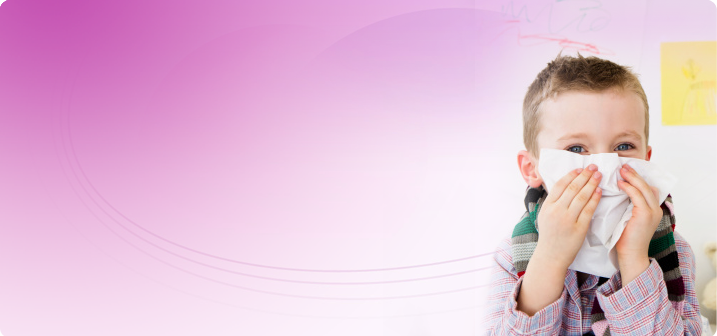They have similar symptoms, so how can you tell the difference?
And – even more importantly – how can you make sure you give your little one the best care you can when they’re feeling poorly?
What are cold and flu?
Cold and flu are both illnesses caused by viruses, and although they share many symptoms, they are actually quite different.
The common cold can be caused by almost 200 different viruses that infect the nose, throat and sinuses. Children have colds so often because their immune system is more vulnerable to infection and is not fully developed.
The flu virus is quite different from the cold, and can cause quite different symptoms. It can come on very quickly, too.
So what symptoms should you look out for to tell a cold from the flu?
Spotting a cold
Some common cold symptoms include:
Runny or blocked nose
Sneezing
You’ll usually notice that symptoms develop over a couple of days and last for a few days. In some cases colds can last for as long as 14 days.
Spotting the flu
Flu can be a lot more severe than a cold, and can sometimes leave your child feeling out of sorts.
Some common flu symptoms include:
Fever that comes on rapidly
Aches & pains in muscles
Headache
Tiredness
Sweating
The flu can affect your child quite quickly, and it can make them feel really unwell for a few days. Most cases of flu clear up within a week although the tiredness may last a little longer.
What can you do?
The most important thing you can do for your little one – whether it’s cold or flu that is making them ill – is make sure they are well rested, to help them fight off the infection.
Here are some tips that we recommend for making your child feel more comfortable:
Make sure they have plenty to drink. If they have started eating solid food, offer plenty of drinks, especially water.
Don’t overheat your house. Even if they feel shivery, your child will be more comfortable in a well-aired room at a normal temperature.
If your child has a fever, dress them in light clothes and use only light bedding.
If they have a stuffy nose, you could try a nasal spray or vapour rub to help them breathe more easily – but make sure you use a product that’s suitable for children.
If your baby has a blocked nose, you could also try raising the head of their bed a little, to help their breathing. However it is not advisable to put anything under the mattress of a baby under one year old.
Are there any treatments?
There isnt a cure for the cold or the flu and neither can be treated with antibiotics, but don’t worry, there are lots of ways you can help make your little one feel better.
Paracetamol can ease fevers and aches & pains, but always make sure you only give your child medicine that is suitable for children.
You can rely on medicines like CALPOL® Infant Suspension and CALPOL® SIXPLUS™ Suspension
Should I call the doctor?
When your little one gets a cold or the flu, the chances are they’ll be just fine after a few days.
But you should get in touch with your GP if:
Your child is finding it hard to breathe
Your baby is less than 3 months, and has a temperature over 38°C
Your child’s symptoms last more than 10 days
They have severe earache
Their symptoms are getting worse, rather than better
This list is not exhaustive and of course, if you are worried at all about your child, you should get in touch with your GP.
See also
How to use a nasal spray
Top tips on how to use a nasal spray, so you can help your baby breathe easier.

Contact the HSE
For health advice and reassurance.
1850 24 1850

Treatment advice
"My son has a high temperature, what should I do?"
When your child suffers from a fever, it can be a sign that his body is fighting an infection. We've put together a helpful fact sheet of things to do and what symptoms to look out for.
